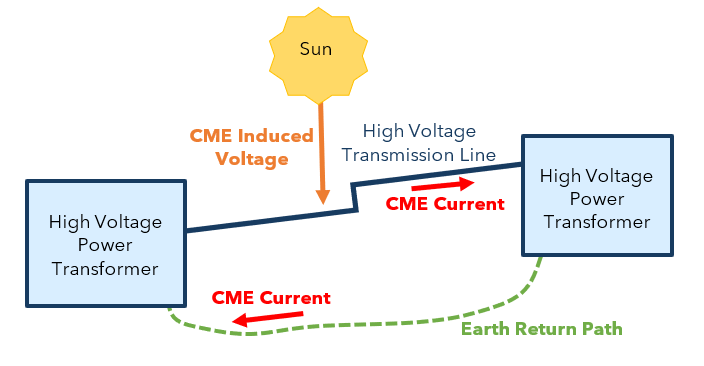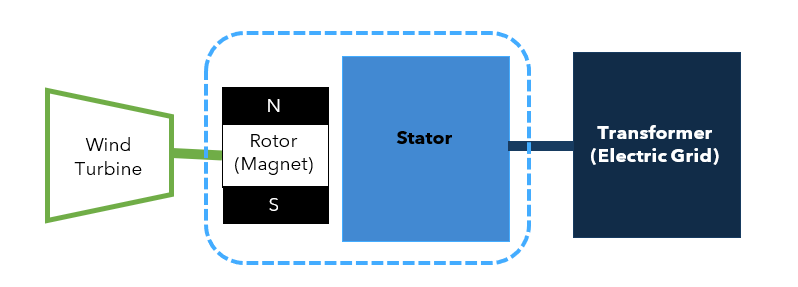This past weekend, the aurora borealis, also known as the northern lights, was visible much further south than usual, including in Oregon, Washington, Maine, New York, and even as far south as Texas and Florida. This activity was caused by a solar coronal mass ejection, also known as solar flares, which are created by a series of powerful explosions of plasma fields from the sun.
In addition to alerts about the spectacular light show, U.S. residents may have received warnings about the possibility of widespread voltage control problems, including power grid component failures and potential blackouts. Let’s take a closer look at how major solar geomagnetic activity could create blackouts, and how electric utilities can prepare for future geomagnetic storms.
Coronal Mass Ejections Impact Energy Production
When a solar coronal mass ejection (CME) hits earth’s magnetosphere, the CME generates voltage that is superimposed on the electric energy grid. Coronal mass ejection voltage can create currents on the grid that can lead to transformer failures and blackouts. To understand how this can happen, it is important to understand how electric energy is generated.
Electric energy is produced by spinning a magnet in a coil of wire. In energy production facilities, the magnet is part of a rotor that is spun by a wind turbine, a steam turbine, or a gas turbine. The coil of wire is referred to as the stator because it is stationary. Wires are connected from the stator to a transformer that is connected to the electric grid. This process is illustrated in Figure 1.
a magnet inside a coil of wire that is connected to the electric grid.
Coronal mass ejection voltage is generated in the same manner as electric energy is produced. CME establishes a magnetic field that our planet rotates through. Voltage builds up between locations on earth’s surface. The difference is that the earth spins in a magnetic field to create CME voltage, whereas in electric production facilities, the magnet spins.
CMEs Overheat Transformers, Causing Blackouts
High voltage power lines act as CME voltage collectors that allow CME current to flow across the electric energy grid. CME current flows from transmission lines through large power transformers to earth as illustrated in Figure 2.

and send it to large, high voltage power transformers.
The problem is that CME current is a quasi-DC current that is superimposed on the 60 Hertz current that flows through the electric energy grid. The CME current upsets the flux density in transformers. Figure 3 shows two types of B-H curves (B is flux density, H is magnetic field strength): normal, symmetrical flux density compared with abnormal, unsymmetrical flux density caused by CME voltage and current.

When B-H curves are not symmetrical, transformers only transfer energy across windings part of the time. This means that some of the time, very large amounts of energy are retained in transformer core assemblies. When this happens for only a few minutes, transformer windings overheat and fail, leading to a wide area blackout.
A Rare but Consequential Event
Although the probability is very low that a solar storm will impact the electric power grid, the consequences can be substantial. In 1989, a large geomagnetic storm hit Quebec, Canada, causing seven protective relay schemes to actuate in less than two minutes. This led to a 12-hour power outage. A large solar storm with CMEs that strike the earth in a more central location could knock out power around the world for days to weeks after the peak solar activity.
Solar storms occur on an 11-year cycle. During the current solar cycle, which spans the years 2020 to 2031, July 2025 is forecast to have the maximum intensity of geomagnetic activity. This means that a solar storm of a similar magnitude to that experienced in Quebec in 1989 could occur next summer.
Eliminate Transformer Failures from Solar Flares
Although geomagnetic storms are rare, electric utilities should prepare for them today. The consequences of not preparing could be dire. Thankfully, there are many solutions to eliminate the possibility that a CME can cause transformer failures and blackouts, including:
- Insert series capacitors in transformer neutrals.
- Insert series capacitors in each phase of transmission lines.
- Replace wye-grounded autotransformers with delta – wye grounded transformers.
- Insert series resistors in transformer neutrals.
- Temporarily remove some transmission lines from operation during a solar storm.
Interested in having your system assessed for geomagnetic storm preparedness? Prescient offers geomagnetic storm analysis as one of it’s many services. Our expert staff will not only assess the current status of your lines, we will also provide detailed recommendations to improve your system’s preparedness for the next major geomagnetic storm. Contact us for a free, in depth whitepaper or consultation.










